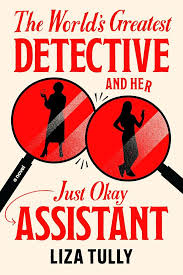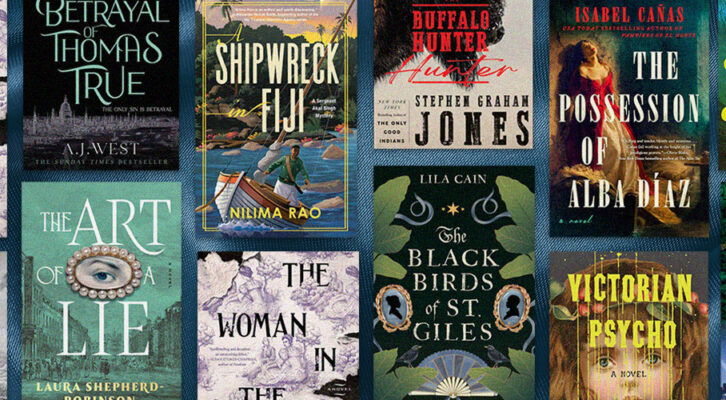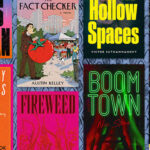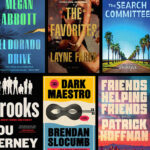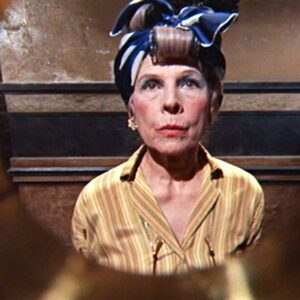When you consider the total number of murder mysteries that have appeared in this country and abroad, in print and on screen, since Edgar Allan Poe’s Murders in the Rue Morgue appeared in 1841, you’d be forgiven for thinking that the genre must certainly be exhausted by now, or at least that it would be all but impossible for a writer to achieve any kind of originality. Yet the demand for murder mysteries continues unabated—in fact, it only seems to grow—and mystery writers continue to produce works that somehow manage to feel new.
How do they do it? I pondered this a lot as I was writing my first murder mystery, and, while I didn’t arrive at anything approaching a definitive answer, I did find myself thinking more analytically than usual about the genre as a whole, about which elements must be kept stable, and where the opportunities for novelty exist.
I ought to start by noting that murder mysteries usually deal with a very specific kind of killing—one that springs from a real or imagined pre-existing relationship between the killer and his victim. It’s a personal act, almost intimate, and its basic parts are pretty obvious: there’s a victim, a killer, a motive, a method, and a cover-up. After that, there’s an investigation that unravels the cover-up and reveals the killer and his motive. Most of those story elements give the writer plenty of opportunities for invention.
Consider the victim. Though readers generally prefer that we refrain from harming children and animals, we have wide latitude when it comes to choosing who will die. Killers, too, can be drawn from any walk of life or social class, and they don’t have to look or act like evildoers. Indeed, mystery writers constantly delight in showing readers that even the most innocent-looking characters are potentially capable of the heinous act.
Methods of murder are numerous as well. Any way that one person can cause another’s death is fair game in a mystery novel. The only limitation is the author’s imagination and the reader’s tolerance for guts and gore. Likewise, the cover-up and investigation afford plenty of chances to improvise. Readers enjoy villains who surprise them, just as long as the detective surprises them more.
Motive, however, offers the writer far fewer options. P.D. James’ iconic detective, Adam Dalgliesh, is famous for having said, “All the motives for murder are covered by four Ls: Love, Lust, Lucre and Loathing.”
Anthony Horowitz, speaking as the narrator in the first book in his Hawthorne/Horowitz series, explained, “There are only so many reasons why anyone wants to kill someone else. You do it because you want something from them: their money, their wife, their job. You do it because you’re afraid of them. They know something about you and perhaps they’re threatening you. You kill them out of revenge because of something they knowingly or unknowingly did to you. Or, I suppose, you kill them by accident.” He adds matter-of-factly, “After twenty-two episodes of Foyle’s War, I’d pretty much covered every variation.”
Real-world experts on homicide seem to agree. In the Encyclopedia of Murder and Violent Crime, Professor of Criminal Psychology Eric Hickey splits all homicides into only four groups, based on the murderer’s underlying motive.
- Criminal enterprise murder
- Personal cause murder
- Sexual homicide
- Group cause homicide
Whatever terms you use, whatever expert you consult, one idea predominates: there aren’t that many motives for murder. Why? I would say it’s because motives spring from the human heart, which hasn’t changed much over time and is remarkably constant across geographic locations and groups. The heart is the writer’s true underlying subject, to which we are required to be faithful. Whatever else we think we’re doing, or trying to do, fiction writers always mucking about in the heart’s universal needs and desires and its finite number of emotions.
Those who work in the mystery genre have an even narrower scope. We’re specifically concerned with how hearts go wrong, how ordinary emotions can become disordered, eventually creating in a usually law-abiding citizen a compelling reason to end another person’s life. My guess is that a lot of mystery authors spend their lives in a state of moral hypervigilance, forever taking note of how love becomes obsession and anger becomes vengeance, how self-esteem turns into pride, and desire devolves into greed, envy, and lust. (The “seven deadly sins” is a convenient list of some of the things that can go wrong with us and our characters.)
If motive is the one story element that mystery writers can’t revise or reinvent, and yet it occupies the very center of the murder plot, how can we insure that our stories feel fresh and meaningful to returning readers? One method might be to explore the way that a particular situation or environment in today’s world could stress a vulnerable individual to the moral breaking point, essentially turning them into a killer.
For example: Is there a volunteer plagued by understandable social resentment working at the overburdened food bank in your city? Probably. Can a teenage girl desperate to be admired as a social media influencer make a disastrous choice? Sadly, yes. What does envy look like in a modern upper-class family? How about hate at a school board meeting? Pride among displaced workers? How could love for nature lead to murder on a cattle ranch in 2025? The possibilities are endless. Getting the killer’s motive to resonate with modern readers, to echo a little too closely what readers themselves might be feeling, witnessing, or worrying about in our evolving society, is, I would argue, one of the powerful ways that mystery writers keep people coming back for more.
The murder mystery offers writers plenty of openings for invention and improvisation. But when it comes to the vital element of motive, we have no choice but to stay close to home. And that’s fine. We don’t need to reimagine why people want to kill each other; we just need to notice how hearts are endangered today.
***


